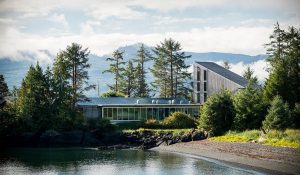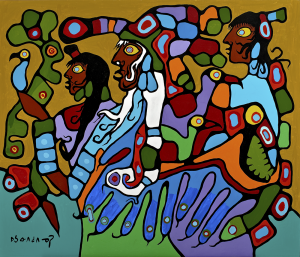
Red: A Haida Manga is a graphic novel written by Michael Nicoll Yahgulanaas. He is a Haida visual artist, author, and public speaker. Yahgulanaas also was an elected Chief Councillor of the Old Massett Village Council and a member of the Council of the Haida Nation. The story is about a brother and sister who live in a village on the west coast of Haida Gwaii. One night, the sister is taken by pirates.
“Haida Manga blends North Pacific Indigenous iconographies and framelines with the graphic dynamism of Asian manga.” https://mny.ca/en/biography
This is another example of the meshing of two different cultural forms while not letting the beliefs of one expirate the traditions of the other. It’s also a very amazing book for all ages!




